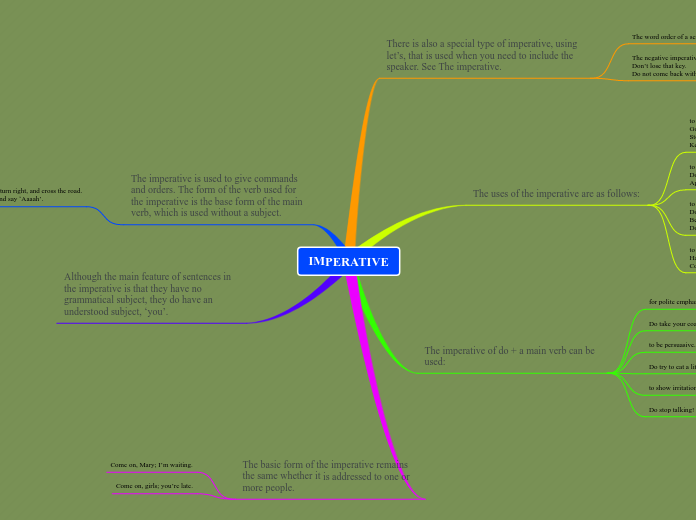IMPERATIVE
There is also a special type of imperative, using let’s, that is used when you need to include the speaker. See The imperative.
The word order of a sentence in the imperative is:
verb + object (if needed).
The negative imperative is made with do + not or don’t.
Don’t lose that key.
Do not come back without it!
The uses of the imperative are as follows:
to give an order.
Go away.
Stop that.
Keep quiet.
to give instructions.
Don’t use this spray near a naked flame.
Apply the glue thinly and leave it for ten minutes.
to give advice or warnings.
Don’t forget to take your passport with you.
Be careful!
Don’t go on the ice.
to make an offer or an invitation.
Have a piece of cake.
Come round and see me some time.
The imperative of do + a main verb can be used:
for polite emphasis.
Do take your coat off.
to be persuasive.
Do try to eat a little of this; it will be good for you.
to show irritation.
Do stop talking! I’m trying to work.
The imperative is used to give commands and orders. The form of the verb used for the imperative is the base form of the main verb, which is used without a subject.
Walk to the corner, turn right, and cross the road.
Open your mouth and say ‘Aaaah’.
Although the main feature of sentences in the imperative is that they have no grammatical subject, they do have an understood subject, ‘you’.
The basic form of the imperative remains the same whether it is addressed to one or more people.
Come on, Mary; I’m waiting.
Come on, girls; you’re late.
